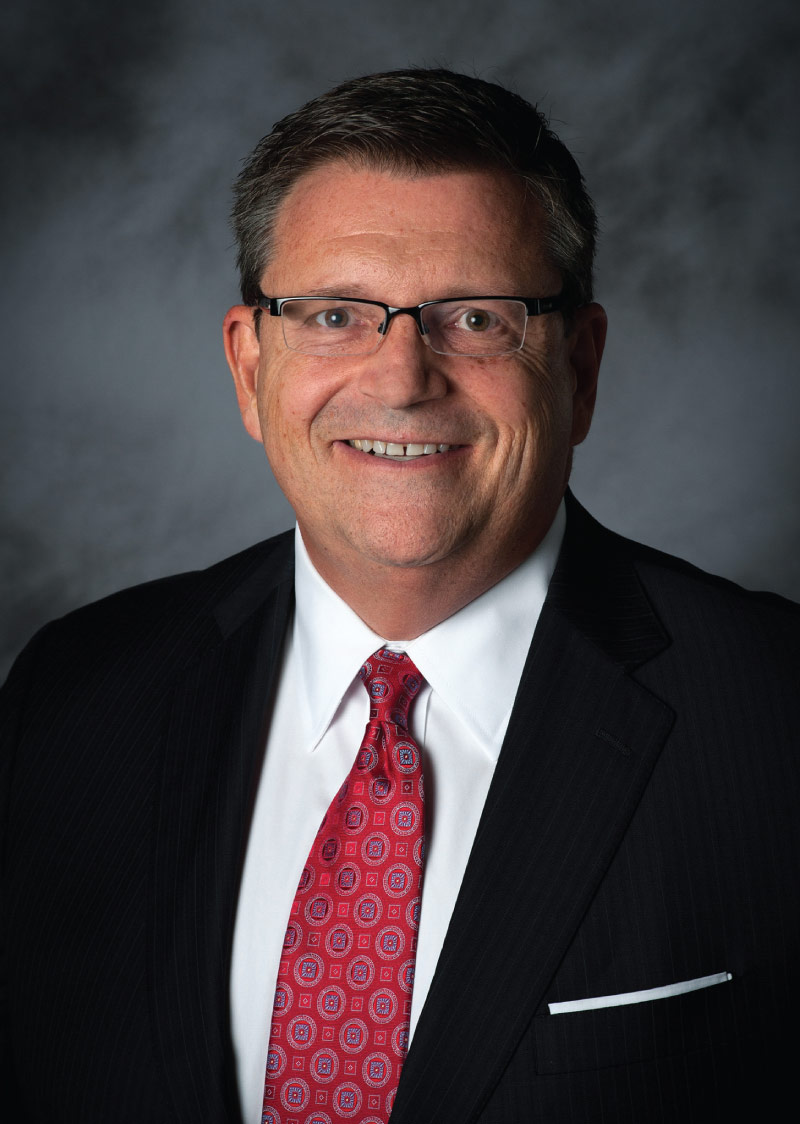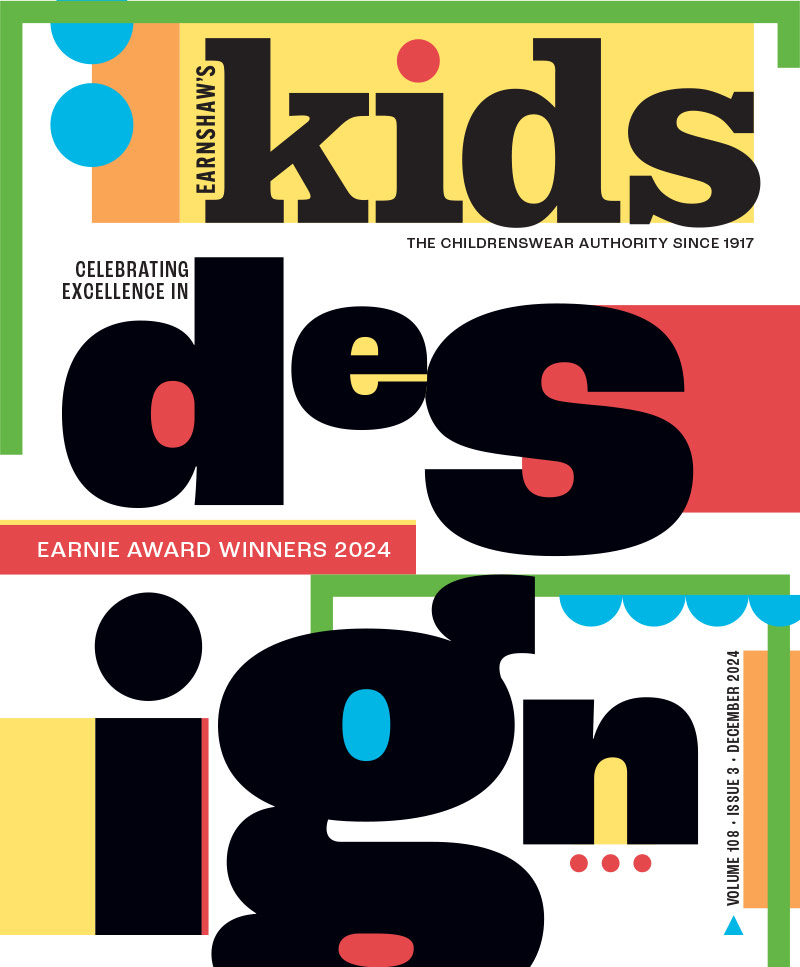Chief Operating Officer Michael M. Langfitt plots Trimfoot’s growth.

Trimfoot Chief Operating Officer, Michael M. Langfitt
When you consider the average lifespan of a company is 10 years, according to some studies, Trimfoot’s 104 years in business is nothing less than remarkable. Not many companies can boast membership in the century club, and the firm’s longevity was a huge selling point for Michael M. Langfitt when he decided to become chief operating officer last September.
Originally founded in 1913 as Wizard Lightfoot & Appliance Co., in St. Louis, the company changed its name to Trimfoot in 1927 and began producing and selling children’s shoes under the brand Baby Deer in 1938. “It was a high-quality line,” Langfitt relays. Back then, he says, training was extensive. Salespeople were required to study the bones of a child’s foot, taught how to specifically sell baby shoes and even became a certified Trimfoot shoe-fitter—metal badge and all. “Every department store wanted it, every shoe store wanted it, every mom-and-pop store wanted it. They knew it by name.”
Chat Room
Who is your favorite historical character, and why?
General Colin Powell. I don’t have a military background, but I have heard him speak on several occasions. I’ve read his books and seen his presentation called “A Leadership Primer.” Although it is clearly military-based, he’s got great suggestions for business. One of his quotes I like is, “Don’t be afraid to challenge the pros, even in their own backyard.”
What’s on our reading list?
My daughter is a library professional and my wife is a consumer of books. I read everything online. I read periodicals, anything that has to do with leadership, culture change, team building or business growth… and sports.
What would people be surprised to learn about you?
People who know me know this already. People who don’t know me may not have any clue. I have ridden a bicycle almost all the way across the United States, one state at a time. I have two or three states still left on the East Coast. There’s nothing more eye-opening than noticing every little thing you’re passing. It’s a great way to think.
In the ’40s, Trimfoot moved its headquarters to Farmington, Mo. Although its factory has long closed in favor of overseas production, Trimfoot’s 70 employees still provide footwear for infants and children as well as for women and dance markets. In addition to Baby Deer, children’s lines include Wee Kids, Natural Steps, Jessica Simpson, Dance Class, School Issue, Lindsay Phillips and Character License. The company also acts as a distributor for Ralph Lauren, Feiyue, Disney, DC Comics and Marvel. Price points are moderate, ranging from $19.99 to $79.99 at retail.
Six months ago, Joe H. Scott Sr., previously a 50-percent owner and silent partner, acquired 100 percent and controlling interest of the business and shook up the top ranks.
Scott tapped Langfitt, an executive with more than 35 years of experience under his belt with stints at Payless ShoeSource, Gap and Target, to streamline the company’s processes, kick up the level of service and make footwear more compelling, thereby increasing the products’ value.
Langfitt sat down with Earnshaw’s to discuss Trimfoot’s best avenues for growth, tapping into tenured employees and their sense of pride and why he loves coming to work in the morning.
bbb
What do you love most about footwear?
I’m a merchant at heart, and that’s how I approach everything. I ask myself, ‘how would retailers interpret this? How can they maximize sales? What do we need to do to make their jobs even simpler?’
What were some of the earliest lessons you learned in the footwear business?
It’s a whole different mindset. There are, on an athletic shoe, up to 100 or more individual pieces, and that becomes mind-boggling. Understanding how one change impacts somebody’s comfort, on which they’re going to put an unbelievable amount of pressure and force—it’s a science, and it’s an art.
Is children’s footwear more challenging than adult footwear?
Number one, they’re the one customer who can’t tell you if the shoe fits or how it feels or if they like it. Number two, the styles have to be cute because typically a mom, grandma, grandparent, aunt or relative is buying the product. It also has to be functional because, at the early stages of a child’s life, protecting their feet is tremendously important. Function is more important than fashion, but when you can combine fashion and function, then you’re doing great.
I understand you read article in this magazine about a 100-year-old business positioning itself as a startup, and it struck you. Is that your plan for Trimfoot?
Yes. The company was based on being the industry leader in infants and then eventually in the children’s business. We were the first in many areas. For example, we were the originators and innovators of the clear see-through clamshell that we developed with the Monsanto Company. We were the first company to offer Disney-licensed products in the world because the original owner, J.B. Reinhard Sr., and Walt Disney were close personal friends as they were both from Missouri. There were a lot of firsts. We were the Nike of the day, if you will.
Would like to get back to being a company of firsts?
With that heritage, yes. We’ve created a new logo. Beneath that logo, we have a mission statement: style, heritage and durability. That speaks not only to the company and to what we believe in and is our mantra, but it also speaks to the products that we have continually provided to our clients. We don’t want to be, and we never will be, the cheapest resource. We want to be the smartest resource.
What are the challenges of turning a 104-year-old company into a startup again?
With that comes both good news and bad news. Some of it is baggage. You’ve got people that are extremely tenured and have have done it one way so long that when you begin to implement change, it’s not accepted universally. That’s a cultural issue. But in a long-established business, there’s a tremendous sense of pride. If you can tap into that, you can get everybody rowing in the same direction.
What challenges are childrenswear companies facing right now?
The ongoing conversation ranges from possible political changes and tariffs to import taxation and the relationship with the Far East. When you realize how much the United States imports from China, as an example, we’re really not in a position to make them unhappy.
How are you navigating the rapidly changing retail landscape?
For years, the country has been over-retailed. Right now we’re seeing the decline of malls, mergers of multiple department stores and a change in consumer selling patterns. Direct-to-consumer is no longer a desire, it’s an expectation. People want instant gratification, and they want to shop wherever they are—at a ballgame with their portable devices or at home with an iPad or a laptop. The best retailers in the world provide a high-quality experience. You have mere seconds to establish a rapport with the customer and build trust. But once you do, you’ve got them for life.
What tips the scales in terms of finding the right licensing partner?
Certainly if you’re aligned on goals, it makes the partnership easier and much more enjoyable. However, I think you can have a business relationship without it. It’s not all perfectly balanced, and it’s not all 100 percent of the time. At the end of the day, if we can come to your aid and you can come to our aid, it’s a good alliance.
Your internal three-word mission statement is “responsive, opportunistic and intentional.” What do those words mean to Trimfoot?
‘Responsive’ means we can’t rest on our laurels. We have to take initiative, and we have to do it now. ‘Opportunistic’ is exactly what it means: If there is an opportunity—even though we may not be completely ready—we’ll take a fly at it. ‘Intentional’ means don’t go into it halfway. I’m an all-in or all-out kind of person.
What do you envision for the company long-term?
Located squarely in Farmington, but with a footprint around the entire country (and hopefully the world). I have a lot of experience south of the border, and I think there’s a tremendous opportunity for us. Our [third party] logistics business—we ship shoes for other people—is also a huge growth potential for us. We’ve got the capacity to manage sourcing, inventory and freight-forwarding. The more the business grows to direct-to-consumer, that demand is going to increase as well.
What’s a typical day at the office?
There’s no such thing as a typical day. For some people it’s terrifying, for me it’s like mother’s milk. It’s what I thrive on. I love the pace. I love the challenge. Former bosses and peers have referred to me in the past as a puzzle master. •



Leave a Comment: